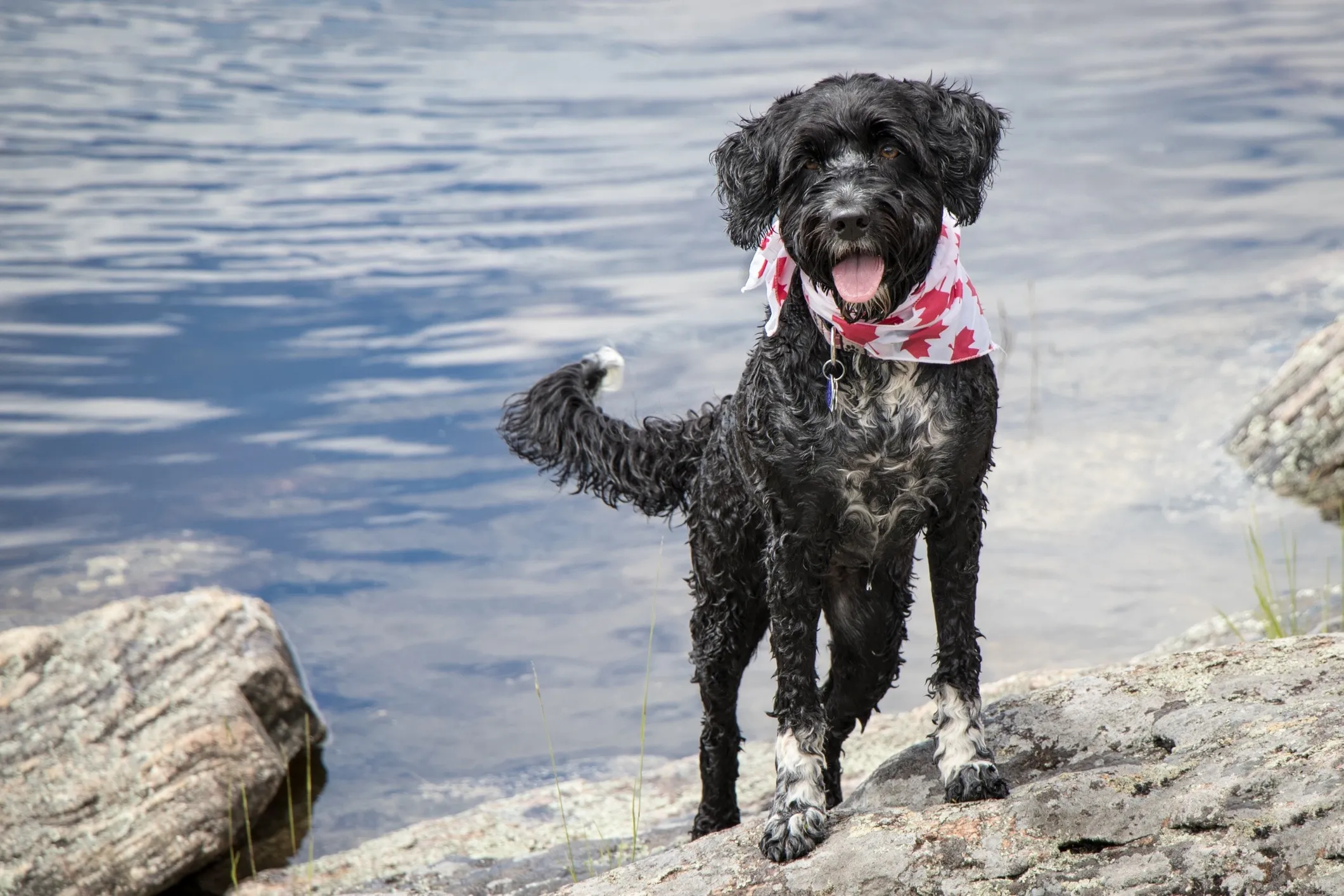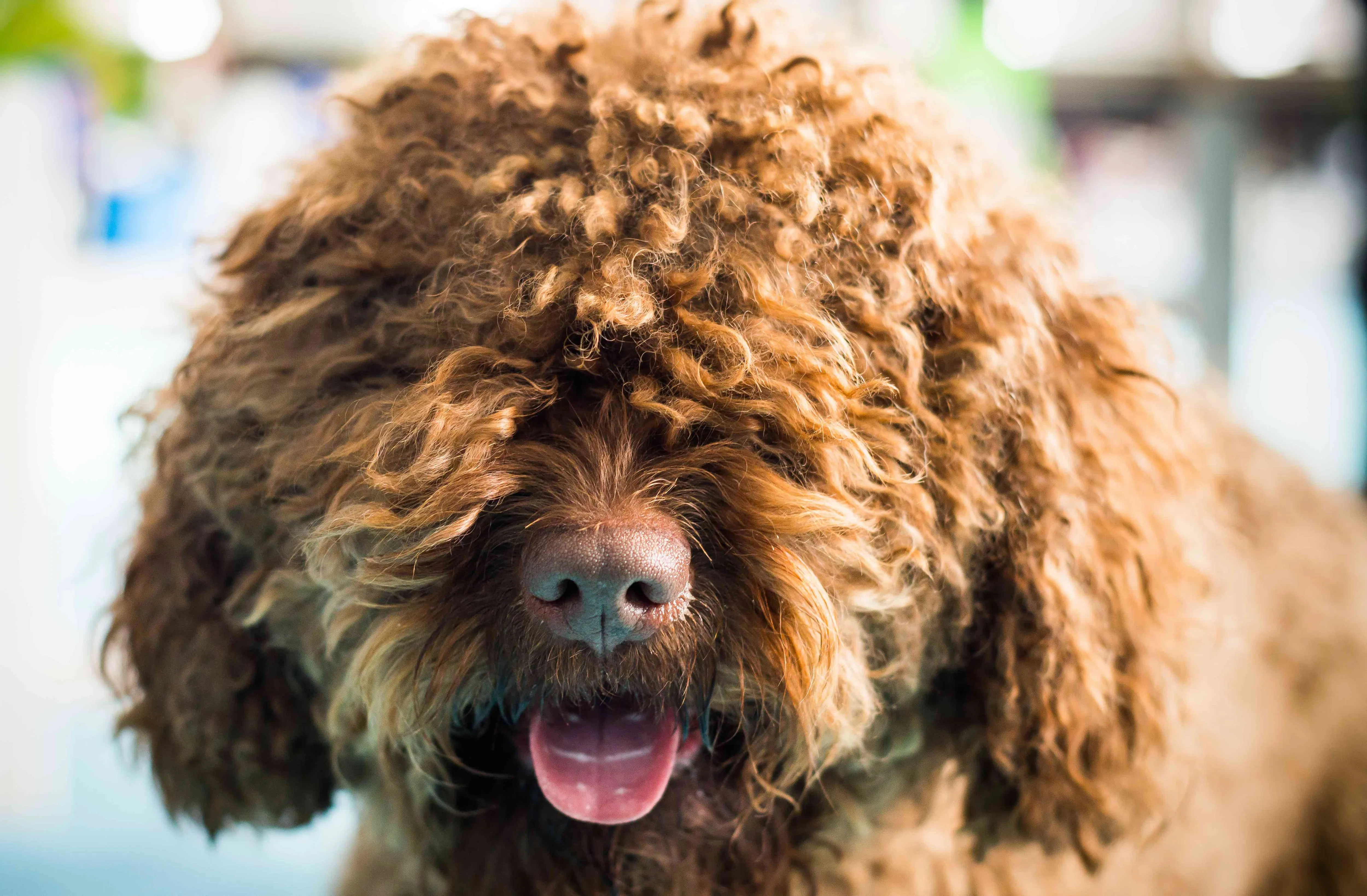Bringing a dog into your home is a joyous occasion, but for families dealing with allergies, finding the right canine companion can be a challenge. Many potential pet parents look for large family dogs that don’t shed a lot, hoping to minimize dander and allergic reactions. While no dog is truly 100% allergen-free, certain breeds are known to shed significantly less, making them a better fit for sensitive individuals. These low-shedding breeds often have unique coat types that trap dander and hair, rather than releasing it into the environment, offering the best of both worlds: a loving, substantial family pet and a more manageable household environment for allergy sufferers. Understanding which large breeds fit this description can help your family find the perfect furry friend. For more insights into these wonderful companions, consider exploring our detailed guide on large family dogs that dont shed a lot.
Understanding Low-Shedding and Allergies
The concept of a “hypoallergenic” dog is often misunderstood. All dogs produce dander (tiny flakes of skin), saliva, and urine, which are the primary sources of allergens. However, dogs with hair that sheds less frequently, or has a different texture, tend to release fewer allergens into the air. This is why low-shedding breeds are often recommended for people with mild to moderate dog allergies. It’s not about being completely allergen-free, but rather significantly reducing the amount of allergens dispersed in the home.
These breeds require regular grooming to maintain their coats and prevent matting, which also helps to remove loose hair and dander before it can spread. Investing in consistent grooming practices, along with maintaining a clean home environment, is crucial for minimizing allergic triggers, even with a low-shedding dog.
Top Large Family Dogs That Don’t Shed Much
For families seeking a larger dog that is both affectionate and sheds minimally, several breeds stand out. These dogs offer a wonderful combination of temperament, size, and coat characteristics suitable for family life. Many of these breeds are also highly intelligent and trainable, making them adaptable companions.
Standard Poodle
The Standard Poodle is an elegant and highly intelligent breed, renowned for its minimal shedding coat. Originally bred for hunting, these dogs are active and require mental and physical stimulation. They are incredibly smart and easily trainable, making them excellent family pets that thrive on interaction. Their curly, dense coat needs regular grooming to prevent matting, but it effectively traps loose hair and dander. Standard Poodles typically weigh between 45 and 70 pounds and are known for their playful yet dignified demeanor, fitting well into various family dynamics.
 White Standard Poodle gracefully walking through lush green grass
White Standard Poodle gracefully walking through lush green grass
Giant Schnauzer
Capable of reaching impressive heights of over 27 inches and weighing up to 85 pounds, the Giant Schnauzer is among the largest low-shedding breeds. These powerful dogs are intelligent, loyal, and protective, making them excellent guardians and devoted family members. Giant Schnauzers require substantial exercise, including long walks, runs, and engaging play, to keep them happy and well-behaved. Their coarse, wiry coat, while low-shedding, needs regular brushing and professional grooming to maintain its condition and distinctive appearance.
Portuguese Water Dog
Once a loyal assistant to fishermen, the Portuguese Water Dog is a robust, medium-sized breed known for its thick, curly coat that sheds minimally. These dogs are intelligent, highly trainable, and possess a friendly disposition, making them wonderful family pets. Portuguese Water Dogs are high-energy pups that excel in activities like swimming, fetch, and agility. Their love for water means they are always up for an aquatic adventure, and regular exercise is key to their health and happiness. Their unique coat requires consistent grooming to prevent matting and ensure its health.
 Black and white Portuguese Water Dog wearing a red bandana near a lake
Black and white Portuguese Water Dog wearing a red bandana near a lake
Labradoodle
A popular crossbreed between a Labrador Retriever and a Poodle, the Labradoodle was originally developed as a hypoallergenic service dog. Standard Labradoodles can be quite large, inheriting a friendly demeanor and high intelligence from both parent breeds. They are known to be excellent family pets, gentle and highly trainable, especially when properly socialized and exercised from a young age. Their low-shedding, often wavy or curly coat, comes in various textures and requires regular grooming to keep it free from tangles and mats. For families prioritizing hypoallergenic qualities, the Labradoodle is a fantastic choice, embodying the best characteristics of its lineage.
Goldendoodle
Another beloved “doodle” breed, Goldendoodles are a cross between a Golden Retriever and a Poodle. Like Labradoodles, they are highly intelligent, possess a friendly nature, and shed minimally, making them a superb choice for families seeking a larger, low-allergen dog. While many are known for their beautiful golden coats, they come in a wide array of colors and textures. Standard Goldendoodles can be quite large and thrive on being part of family activities. Consistent grooming with a slicker brush is essential to prevent their plush coats from matting.
 A friendly Goldendoodle relaxing on a comfortable couch at home
A friendly Goldendoodle relaxing on a comfortable couch at home
Bernedoodle
The Bernedoodle is a crossbreed resulting from a Bernese Mountain Dog and a Poodle. These large, affectionate dogs are gaining popularity for their gentle demeanor and suitability for families with children and other pets. Bernedoodles combine the loving nature of the Bernese with the intelligence and low-shedding coat of the Poodle, creating a wonderful family companion. They require ample exercise to stay active and content, as both parent breeds are energetic. Their wavy to curly coats come in various patterns and need regular grooming.
Afghan Hound
Known for their distinctive long, flowing coat and slender, aristocratic build, Afghan Hounds are large, loving dogs towards their family. While their coat appears high-maintenance, it is a low-shedding type. They are built for speed and possess an independent spirit. Early and consistent socialization is crucial for this breed, as they can be aloof with strangers but deeply devoted to their own people. Their luxurious coat requires significant grooming to prevent tangles and maintain its elegant appearance.
 Majestic Gray and Tan Afghan Hound looking intently at the camera
Majestic Gray and Tan Afghan Hound looking intently at the camera
Barbet
The Barbet, pronounced “bar-bay,” is a big, cheerful dog characterized by its shaggy, woolly, and low-shedding coat. The name itself, derived from the French word “barbe” (beard), highlights its distinctive hairy chin. These friendly water dogs love to swim, and their protective curly coat is perfectly suited for it. Barbets are known for being good-natured and can integrate well into active family homes. To keep their unique coat in prime condition, especially after swimming, regular brushing with a slicker or pin brush two to three times a week is necessary.
 Close-up of a curly red Barbet dog's face, displaying its characteristic beard
Close-up of a curly red Barbet dog's face, displaying its characteristic beard
Other Notable Large Low-Shedding Family Dogs
- Standard Schnauzer: A medium to large breed, these intelligent dogs are smaller than their Giant counterparts but share their low-shedding qualities and robust nature. They fit into various environments as long as they get daily exercise and mental stimulation.
- Lagotto Romagnolo: While less common, these water retrievers are excellent family dogs, known for being good with children and other pets. Their curly, woolly coat is low-shedding and protected them from chilly waters in their original role.
- Irish Water Spaniel: A large, energetic water dog breed with a thick, curly, low-shedding coat. They are intelligent, highly trainable, and make wonderful companions for active families who can meet their substantial exercise needs.
- Aussiedoodle (Standard): A cross between an Australian Shepherd and a Standard Poodle, these dogs are highly intelligent and energetic. Standard-sized Aussiedoodles are large and need significant exercise and mental stimulation to prevent boredom.
- Soft Coated Wheaten Terrier: This medium-sized Irish breed boasts a silky, incredibly soft coat that sheds minimally. Wheatens are known for their playful nature and high energy, requiring ample exercise and stimulation to be well-behaved family members.
- Xoloitzcuintli (Standard): The standard size of this ancient Mexican breed can be quite large. Available in both hairless and short-coated varieties, both are considered low-shedding. They are loyal and protective, often forming strong bonds with their families.
- Whoodle: A cross between a Soft-Coated Wheaten Terrier and a Poodle, the Whoodle is a friendly, affectionate dog that sheds very little. They inherit intelligence and a loving nature from both parents, making them great family additions.
- Peruvian Inca Orchid (Large): Though rare, the large variety of this ancient, nearly hairless breed is an excellent choice for allergy sufferers due to its minimal shedding. They are known for their elegant appearance and can be devoted companions.
Essential Tips for Living with a Low-Shedding Dog
Even with a low-shedding breed, managing allergens and ensuring a harmonious home environment requires a proactive approach. These tips are crucial for families with allergy concerns.
Consistent Grooming is Key
Low-shedding dogs often require more dedicated grooming than high-shedding breeds. Their unique coats, whether curly, wiry, or hairless, need regular attention to remain healthy and minimize allergen dispersal.
- Brushing: Brush your dog several times a week, or even daily, depending on the coat type, to remove loose hair and dander.
- Bathing: Regular bathing (every 4-6 weeks) with a gentle, hypoallergenic shampoo can significantly reduce allergens on their skin and coat. Products like dander removers can also be beneficial.
- Trimming/Stripping: Many of these breeds require professional grooming for trimming or hand-stripping to maintain their coat’s health and appearance. Budget for regular visits or learn to groom your pup at home.
Maintain a Clean Home Environment
Minimizing allergens in your living space is as important as grooming your dog.
- Vacuuming and Dusting: Regularly vacuum floors and furniture, and dust surfaces to remove accumulated dander. Consider using a vacuum with a HEPA filter.
- Laundry: Wash pet bedding, throw blankets, and even your own bedding frequently to eliminate dander.
- Air Quality: Use air purifiers with HEPA filters to capture airborne allergens. Ensure good ventilation in your home by opening windows when possible.
Consult Your Doctor
If family members have severe allergies, it’s vital to consult with a healthcare provider or allergist. They can offer strategies for managing allergies, including medication, nasal sprays, or immunotherapy. Discussing your family’s specific needs before bringing a new dog home can help create a comprehensive plan for managing potential allergic reactions. It’s also wise to limit direct contact with your dog’s saliva and urine, as these also contain allergens.
Finding Your Perfect Family Companion
Choosing a large family dog that doesn’t shed a lot allows families with allergies to experience the profound joy and companionship that dogs bring, without constant allergic discomfort. By carefully selecting a breed that matches your lifestyle and committing to consistent grooming and home cleanliness, you can create a loving and healthy environment for everyone. Explore options like the best companion dogs that don t shed to broaden your search for a compatible friend. Remember, the bond with a pet is invaluable, and with the right approach, it can be a comfortable and rewarding experience for all.
